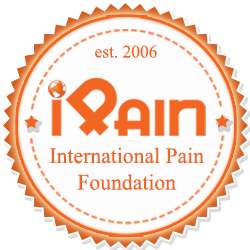Regulators, I Double Dare You! (To Reexamine the Medical Evidence) By: Richard A “Red” Lawhern PhD
Gross over-regulation of doctors in their prescription of opioid pain relievers is driving hundreds out of practice, deserting their patients to agony, disability and sometimes death by suicide. However, despite the protestations of many State and Federal regulators, “the opioid problem” isn’t from over-prescription. Rates of opioid related mortality from all sources are almost entirely unrelated to rates of physician prescribing. The contribution of medically managed opioids is so small that it gets lost in the noise of street drugs. Published data of the CDC prove this reality beyond any reasonable contradiction.
In the relatively few deaths where a prescription-type drug is found in postmortem toxicology screens, it is rarely found alone. Instead, it will be accompanied by multiple illegal street drugs and/or alcohol. Likewise, morphine found in such testing may be a byproduct of heroin metabolism, rather than a prescribed drug. Although we can’t say this is “proof” of anything, it seems at least plausible that significant numbers of deaths attributed by county medical examiners to prescription drugs are in fact the consequences of suicide or misadventure from under-treated pain and depression, rather than from medical exposure to opioids.
We must acknowledge that small numbers of patients treated with opioids for long periods at high doses will develop dependence, displaying withdrawal symptoms and/or breakthrough pain when opioids are rapidly tapered. Much smaller numbers will develop full-fledged addiction, characterized by obsessive drug seeking behaviors. From multiple studies, we know that substance abuse disorder or chronic prescribing in post-surgical patients treated with opioids is uncommon (less than 0.6% for substance abuse, with up to 6% of post-surgical patients needing prolonged prescribing — due to emergence of chronic pain from failed surgeries, not because of substance abuse). Other studies fix the rate of overdose death from prescriptions at about 0.2% per year – comparable to mortality from blood thinners prescribed to prevent atrial fibrillation after stroke.
Widely available demographics data also directly contradict the “over-prescribing” myth. The typical beginning addict is a young white male with a history of joblessness and family disintegration. The most common chronic pain patient by a ratio of 60/40 is a woman in her 40s or older; substance abuse is rare in women whose lives are stable enough to see a doctor repeatedly.
Pain reliever prescribing rates are highest among seniors and lowest among kids and young adults. But seniors have the lowest opioid overdose rates of any age group, and mortality rates have been stable over the last 17 years. Mortality in kids has skyrocketed in the same period and is now six times the rate in seniors.
The demographics of so-called “over-prescribing” don’t work. They never have.
It can be said accurately that physicians need better education in pain treatment and prescribing opioids. GPs get fewer hours on pain in medical school than veterinarians. But regulators need better education too. With so many medical practices turning away pain patients, our remaining doctors are prescribing for more patients with a wider variety of underlying medical disorders, raising their risks of sanction when patients die from their diseases rather than from opioids as such. Complicating all of this is the reality that the genetics of opioid metabolism produce wide variability between patients, in minimum effective dose. There is no one-size-fits-all patient or treatment plan.
The AMA under Dr McAneny has addressed these realities in a recent resolution from their House of Delegates. Regulators would be well advised to read and heed this advice:
“RESOLVED, that our AMA advocate that no entity should use MME (morphine milligram equivalents) thresholds as anything more than guidance, and physicians should not be subject to professional discipline, loss of board certification, loss of clinical privileges, criminal prosecution, civil liability, or other penalties or practice limitations solely for prescribing opioids at a quantitative level above the MME thresholds found in the CDC Guideline for Prescribing Opioids”
Thus my message: Regulator, HEAL THYSELF!
I dare you to try to prove the CDC data or my interpretation of the data is wrong. I DOUBLE DARE you!
About the Author: The author is a technically trained non-physician patient advocate with 22 years of experience as a moderator and medical literature analyst in social media and peer-to-peer patient support groups.
Facebook: https://www.facebook.com/ATIPUSA/
My Publications: http://www.face-facts.org/Lawhern
Personal Website: http://www.lawhern.org


3 comments
Spot-on article! The pain and suffering caused by the “ over-prescribing “ myth defies description! Suicide has , sadly, become the result of many who can’t take the pain anymore.
Thank you again for another excellent article by one of our strongest advocates, Red Lawhern. Will print off a copy and have it available at our information station at the Denton, TX DPP Rally tomorrow. 🙂
Thanks for your confirmations, Patricia and Jane. I do what I can to bring sanity to an insane situation.